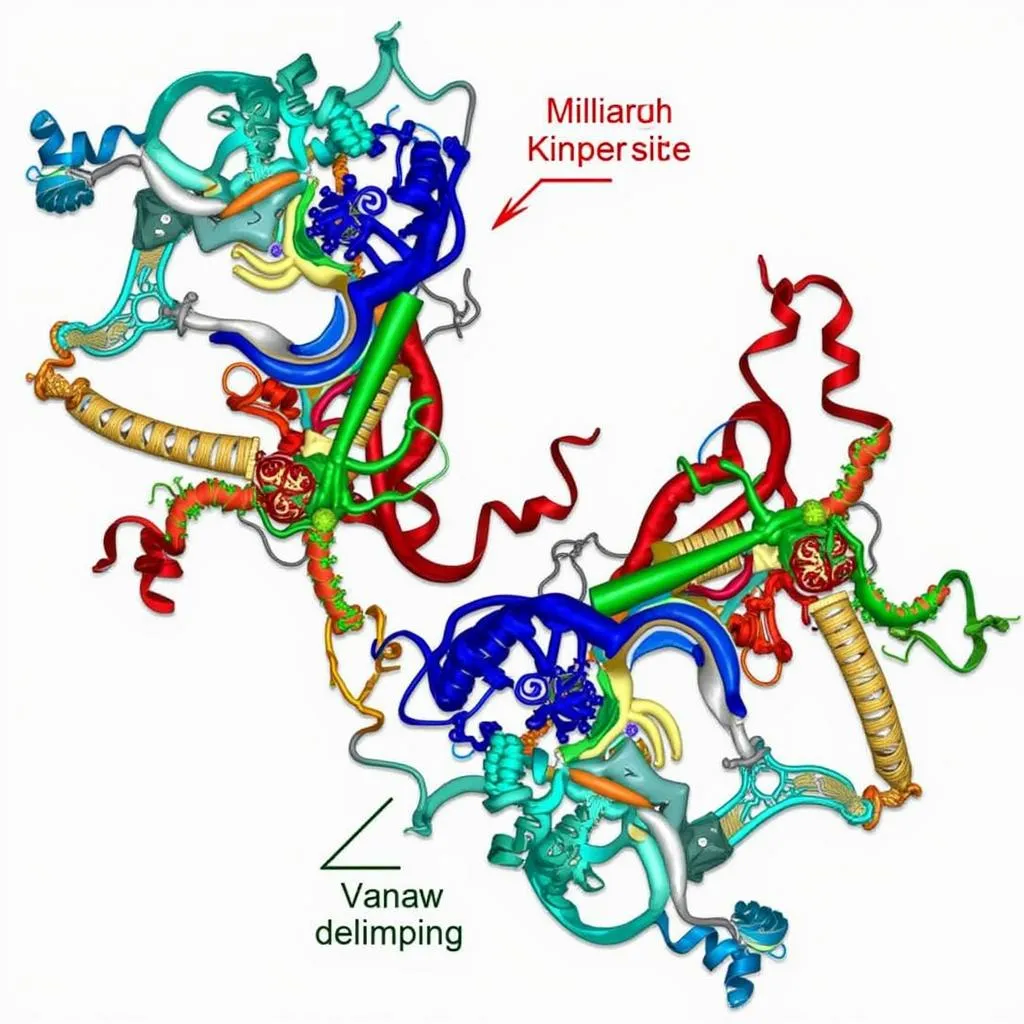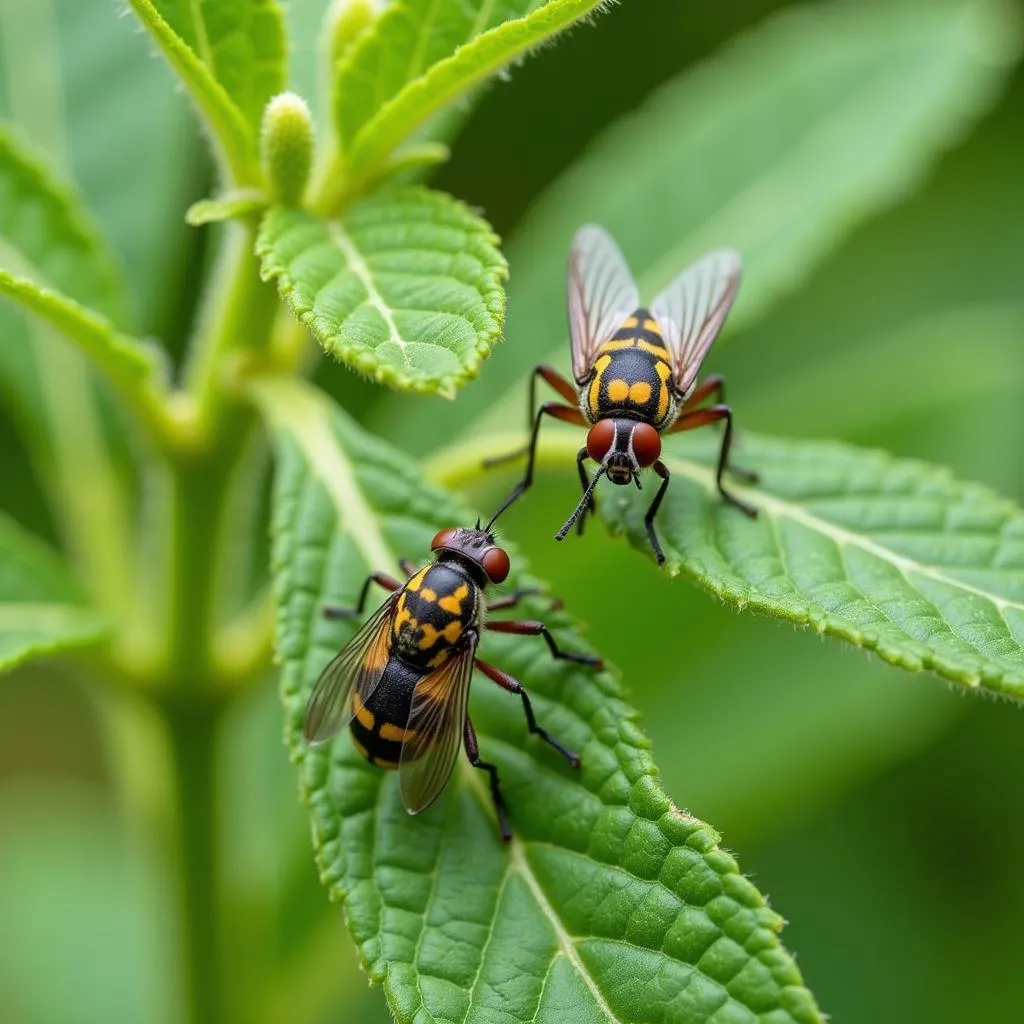Understanding the African Cassava Mosaic Virus: A Deep Dive into the PDB
The African cassava mosaic virus (ACMV) is a devastating plant pathogen that poses a significant threat to cassava production in Africa. It is a member of the genus Begomovirus, which belongs to the family Geminiviridae, and its genome is composed of two circular DNA molecules. This virus is known for its complex biology and its impact on cassava yields, leading to widespread economic and nutritional consequences for millions of people.
The protein data bank (PDB) provides a valuable resource for understanding the structure and function of proteins involved in viral infection. By analyzing the three-dimensional structures of ACMV proteins, researchers can gain insights into how the virus interacts with the host plant, leading to disease development. These studies can inform the development of novel control strategies, including resistant crop varieties and antiviral agents.
The Structure and Function of ACMV Proteins
ACMV, like other geminiviruses, encodes a small number of proteins, each with a specific role in the viral life cycle. Key proteins include:
- Coat Protein (CP): This protein encapsidates the viral genome and is responsible for delivering it to new host cells.
- Replication Associated Protein (Rep): The Rep protein is crucial for replicating the viral genome.
- Movement Protein (MP): This protein facilitates the movement of the virus from cell to cell within the plant.
- Transcriptional Activator Protein (TrAP): This protein regulates the expression of viral genes.
Understanding ACMV through PDB Data
The PDB contains a wealth of structural information about ACMV proteins. Researchers can utilize this data to:
1. Determine the Three-Dimensional Structures of ACMV Proteins:
- This can be done using X-ray crystallography or nuclear magnetic resonance (NMR) spectroscopy.
- The PDB entries provide detailed information about the protein’s conformation, including the positions of atoms and the interactions between amino acids.
2. Identify the Key Functional Sites in ACMV Proteins:
- Structural analysis can reveal the location of binding sites for DNA, host proteins, and other ligands.
- This information is crucial for understanding the mechanisms of viral replication, movement, and gene regulation.
3. Develop Novel Control Strategies:
- Understanding the structure and function of ACMV proteins can guide the development of:
- Resistant Cassava Varieties: By manipulating the protein targets of ACMV, researchers can develop cassava cultivars that are less susceptible to infection.
- Antiviral Agents: Targeting the specific active sites of ACMV proteins can inhibit viral replication and spread.
The Impact of ACMV on Cassava Production
ACMV is a major constraint to cassava production in Africa. It causes various symptoms in infected plants, including:
- Mosaic Leaf Discoloration: The leaves of infected plants show irregular patterns of green and yellow, giving them a mosaic appearance.
- Leaf Curling and Distortions: Leaves may be distorted and curled, impacting photosynthesis.
- Stunted Growth: ACMV-infected plants often fail to reach their full potential size, leading to reduced yields.
How to Combat ACMV
Several strategies can help combat ACMV and minimize its impact on cassava production:
- Use of Disease-Resistant Cassava Varieties: Breeding programs have produced cassava cultivars that are resistant to ACMV.
- Good Agricultural Practices: Implementing practices like crop rotation, early planting, and proper field sanitation can reduce the spread of ACMV.
- Integrated Pest Management: Managing pests that can transmit ACMV, such as whiteflies, is critical for disease control.
The Future of ACMV Research
The PDB remains a valuable resource for understanding ACMV and other plant viruses. Continued research in this field is essential for:
- Developing new and effective control strategies: New antiviral agents and resistant cultivars can be developed based on the insights gained from structural studies.
- Understanding the evolution of ACMV: Analyzing the structural changes in ACMV proteins over time can help researchers predict the emergence of new viral strains.
- Developing innovative agricultural solutions: By combining structural biology with other disciplines, researchers can develop new and innovative approaches to managing ACMV and other plant pathogens.
FAQs
1. What are the main symptoms of cassava mosaic disease caused by ACMV?
The main symptoms of cassava mosaic disease include mosaic leaf discoloration, leaf curling and distortions, and stunted growth.
2. How is ACMV spread?
ACMV is primarily spread by whiteflies, which act as vectors. They feed on infected plants and transmit the virus to healthy plants.
3. What are the economic and nutritional consequences of ACMV?
ACMV can lead to significant losses in cassava production, impacting food security and livelihoods in many African communities.
4. How can I find more information about ACMV research?
You can find more information about ACMV research by visiting the PDB website (https://www.rcsb.org/) and searching for specific ACMV proteins. You can also consult scientific journals and publications.
5. Are there any ongoing efforts to control or eradicate ACMV?
Yes, many researchers and organizations are working on developing new strategies to control and eventually eradicate ACMV.
 The three-dimensional structure of an ACMV protein as determined by X-ray crystallography
The three-dimensional structure of an ACMV protein as determined by X-ray crystallography
 A whitefly feeding on a cassava leaf
A whitefly feeding on a cassava leaf
The Importance of Continued Research
Understanding ACMV and its impact on cassava production is crucial for ensuring food security and improving livelihoods in Africa. Through ongoing research and the use of resources like the PDB, researchers can continue to develop innovative solutions to combat this devastating plant pathogen.
